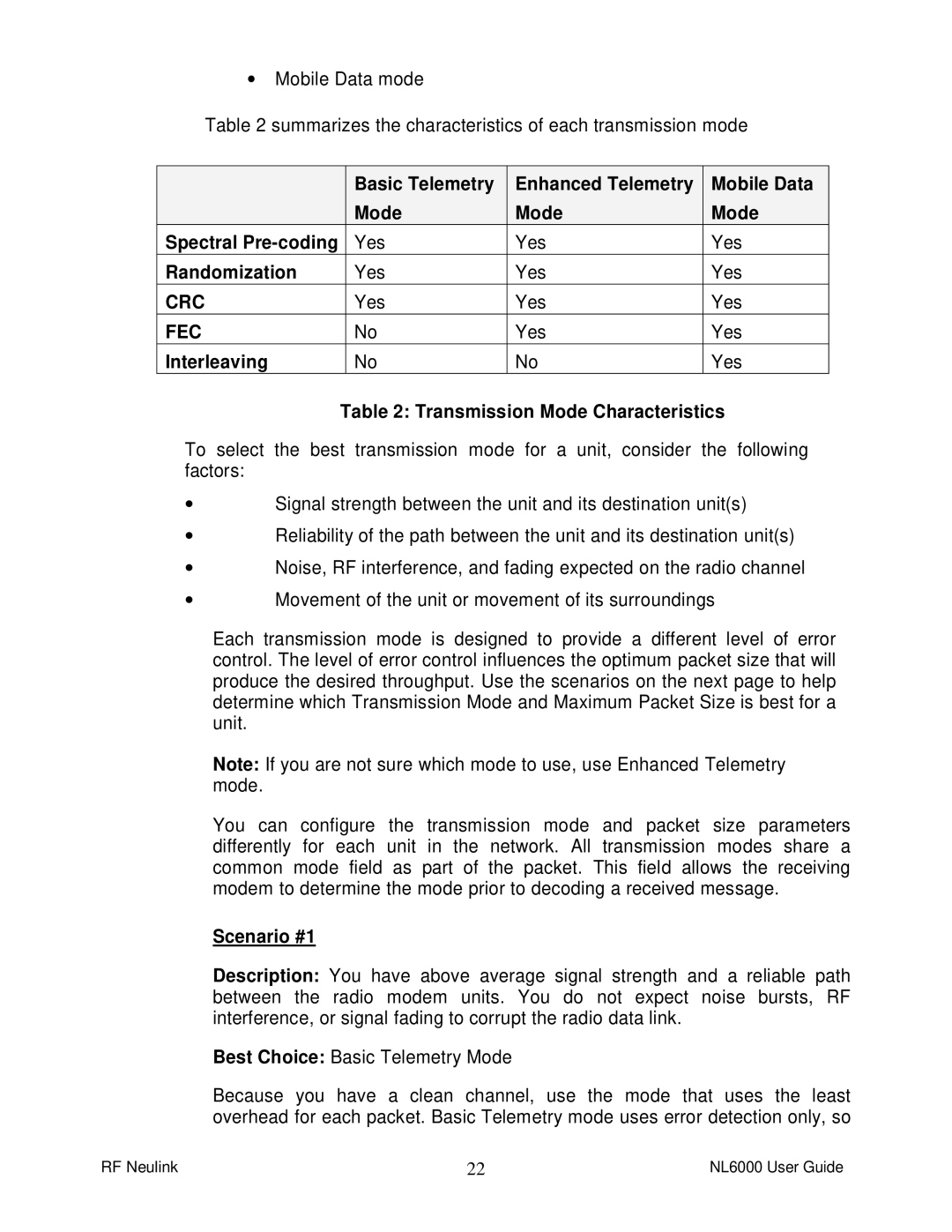∙Mobile Data mode
Table 2 summarizes the characteristics of each transmission mode
| Basic Telemetry | Enhanced Telemetry | Mobile Data |
| Mode | Mode | Mode |
Spectral | Yes | Yes | Yes |
Randomization | Yes | Yes | Yes |
CRC | Yes | Yes | Yes |
FEC | No | Yes | Yes |
Interleaving | No | No | Yes |
Table 2: Transmission Mode Characteristics
To select the best transmission mode for a unit, consider the following factors:
∙Signal strength between the unit and its destination unit(s)
∙Reliability of the path between the unit and its destination unit(s)
∙Noise, RF interference, and fading expected on the radio channel
∙Movement of the unit or movement of its surroundings
Each transmission mode is designed to provide a different level of error control. The level of error control influences the optimum packet size that will produce the desired throughput. Use the scenarios on the next page to help determine which Transmission Mode and Maximum Packet Size is best for a unit.
Note: If you are not sure which mode to use, use Enhanced Telemetry mode.
You can configure the transmission mode and packet size parameters differently for each unit in the network. All transmission modes share a common mode field as part of the packet. This field allows the receiving modem to determine the mode prior to decoding a received message.
Scenario #1
Description: You have above average signal strength and a reliable path between the radio modem units. You do not expect noise bursts, RF interference, or signal fading to corrupt the radio data link.
Best Choice: Basic Telemetry Mode
Because you have a clean channel, use the mode that uses the least overhead for each packet. Basic Telemetry mode uses error detection only, so
RF Neulink | 22 | NL6000 User Guide |
